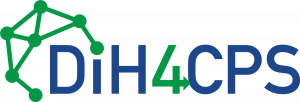This application focuses on „Agriculture & Hunting” sector, providing solutions for digitally underrepresented field of urban orchard monitoring and management. Main idea of this Application Experiment is to develop a smart planter box that assists people in cultivating their own urban orchards leading to improvement in their diet while also reducing water and energy usage in the process.
Problem and Description
For some time now, development of urban orchards has become real. Most of the cities have promoted citizens to grow their own food. Paris expects to have more than 30 ha of urban orchards by 2020, so the city council has enacted a law to allow everyone to have their own one and provide every interested people with some soil and seeds.
People are concerned about the significance of eating well and every day more people grow their own food. Apart from that, there is a clearly growing concern about saving water and energy, reducing the carbon footprint of day-by-day activities and caring about our planet.
Main objective of this AE is development of a new innovative product: a sensorized planter boxes primarily conceptualized for urban orchards. This device will track soil temperature, humidity, carbon concentration and weather conditions. Taking the monitoring data into account CPS is then able to control the conditions through an irrigation system. Users can monitor the process by mobile apps and web server, guaranteeing the survival of the cultivated plants and also promoting savings of water and energy in the cities.
Planter box would be managed in separated irrigation zones, adapting to the crop in every separated area. The system will be equipped with a tank that collects rainwater, but also could be connected to tap water.
AE Description
The implementation of this Application Experiment will start by establishing a design of the system, physical design of the planter boxes and detailed workplan of activities. Moreover, with assistance of HPC4Poland Digital Innovation Hub, business modelling will be done how to best leverage the proposed solution in the market.
The development process will be divided into two parallel tracks:
- physical – focused on mechatronic work for providing the necessary sensors, means of connectivity, energy solutions and irrigation system of the planter box.
- software – implementation of the IoT platform and services, communication with the device. This step also assumes defining management models to be used by the system.
The assumed architecture of the proposed solution is presented on following diagram
An associated application will provide data regarding the plant conditions in real time, along with personal notifications about the crop’s conditions in the planter box. Automated watering algorithms will also be implemented. Based on expert knowledge, plant type and historical sensor values, an optimal watering schedule can be applied to each individual pot, freeing users from the necessity of watering plants by themselves.
Those algorithms will be improving with the everyday data collected by the device. Using machine learning tasks, the system will progressively improve its performance on caring the plants. With the collected training data, algorithms will build mathematical models to make predictions about seedlings growth without being explicitly programmed, so the system will get better all the time thanks to artificial intelligence processes.
Involvement of HPC4Poland DIH will be furthermore needed for the exploitation of the end product. Thanks to the business approach defined in the early stages of the Application Experiment and DIH’s access to the market, decisions will be made on how and with involvement of which companies production of the final version of the product can be realised.
Partner & Expertise:
| PSNC | IoT systems, software development, leader of HPC4Poland DIH, ICT Comptence Center |
| Föra | forest resources assessment, remote sensing, |
For further information, please visit https://dih4cps.eu/experiment-10/

